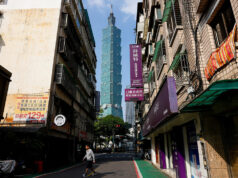Government flags inflation concern
By Melissa Luz T. Lopez Senior Reporter
and Ranier Olson R. Reusora Researcher
INFLATION clocked slower than expected in May but still marked the fastest clip in more than five years and kept the year-to-date pace past the government’s 2-4% target for 2018, prompting state economic managers to express concern and assure the public of action in separate statements on Tuesday.
The Philippine Statistics Authority (PSA) reported a 4.6% inflation rate in May, a fresh high in at least five years, but slower than the 4.9% median in a BusinessWorld poll that was also the estimate given by the Department of Finance (DoF) for the month.
The pace picked up for the fifth straight month, faster than April’s 4.5% and May 2017’s 2.9%, but matched the floor of the Bangko Sentral ng Pilipinas’ (BSP) 4.6-5.4% estimate range.
Core inflation — which excludes volatile food and energy prices — rose to 3.6% in May from 3.5% in April.
The PSA attributed the acceleration to the faster annual gains recorded in alcoholic beverages and tobacco (20.5% from 20% in April 2018); transport (6.2% from 4.9%); restaurant and miscellaneous goods and services (3.7% from 3.4%); as well as furnishing, household equipment and routine maintenance of the house (2.9% from 2.8%).
On the other hand, slower annual growth was recorded in food and non-alcoholic beverages index at 5.7%, slower than the 5.9% rate recorded in the previous month.
The rest of the commodity groups retained their previous month’s growths.
May’s pace took the year-to-date average to 4.1%.

“The inflation outlook continues to be a concern and requires close attention. The actual May inflation of 4.6% is at the low end of our forecast range for the month. That’s positive although headline inflation remains generally elevated,” BSP Governor Nestor A. Espenilla, Jr. told reporters in a text message.
“There are also signs that inflation is slowing and may be close to peak.”
Noting that the economy is “going through a challenging period,” three economic managers — Budget Secretary Benjamin E. Diokno, Socioeconomic Planning Sec. Ernesto M. Pernia and Finance Sec. Carlos G. Dominguez III — said in a separate joint statement that “[t]he government is closely monitoring and taking steps to address the difficulties experienced by Filipino families today arising from higher prices.”
They cited ongoing disbursement of cash subsidies for the poorest of the poor, the possible importation of oil from outside the Organization of Petroleum Exporting Countries and the planned shift to a regular tariff scheme for rice from the current quota system that is expected to “drive down the price of rice by up to P7 per kilo” and “reduce 2018 inflation by around 0.4 percentage points if implemented in the third quarter.”
The BSP has been expecting inflation to keep rising in the next few months and peak towards end of the year, later than previously projected.
“The Monetary Board will consider what further adjustments are necessary to firmly anchor inflationary expectations and ensure that the inflation target will be achieved in 2019,” Mr. Espenilla added.
Analysts generally agree that there will likely be another interest rate increase this year after the 25-basis point rise on May 10 that was the first hike in nearly four years.
One analyst said May’s slower-than-expected pickup in prices may allow the BSP to keep rates steady in its June 21 policy meeting.
“We believe that recent developments would mean that inflation is at or near the peak. These developments also cut the pressure on BSP to hike policy rates this month,” Jose Mario I. Cuyegkeng, senior economist at ING Bank N.V. Manila, said in a market report. “However, we still expect BSP to hike policy rates at the June 21 meeting to preempt second-round effects and stabilize inflation expectations.”
Michael L. Ricafort, economist at the Rizal Commercial Banking Corp. (RCBC), shared this view, saying: “Another [25 basis point] hike in key policy rates remains possible in the third quarter of 2018 when year-on-year inflation is expected to peak in an effort to better manage both actual inflation and inflation expectations in the economy…”
The BSP has conceded to missing its 2-4% inflation target for 2018 as latest estimates showed the full-year pace could average 4.6%.
Nomura economists Euben Paracuelles and Brian Tan said separately that they continue to expect two more rate hikes from the BSP in its June and August policy meetings. The analysts expect a “further acceleration” in price spikes over the coming months given a “feed-through” of tax reform, looming increases in electricity rates, and higher core inflation.
“We believe inflation expectations are likely to rise further given still-accelerating headline inflation, as evident in rising demand for wage increases,” the Nomura analysts added.
For ANZ Research economists Shashank Mendiratta and Sanjay Mathur: “[H]eadline inflation in May came in below our and consensus estimates. Core inflation also sequentially slowed, although an unfavorable base effect resulted in a faster on-year increase of 3.6% year on year.”
“As such, the moderation in headline inflation both on an annual and sequential basis is a positive development,” they said in a note.
“Nonetheless, it still remains above the 2-4% target band of the BSP and further progress is necessary. We continue to expect one more 25 basis point rate hike in August.”
On the other hand, Guian Angelo S. Dumalagan, market economist at the Land Bank of the Philippines (LANDBANK), said that the “weaker-than-expected inflation… could reduce the chances of further tightening moves from the BSP this year.”
“The slower rise in the prices of non-alcoholic beverages suggests that the impact of the TRAIN (Tax Reform for Acceleration and Inclusion) law on the costs of sugar-sweetened drinks may already be normalizing.”
OUTLOOK
Prices of widely used goods will likely stay elevated for the rest of the year, according to economists.
“Moving forward, inflation might rise further amid higher oil prices and a weaker peso,” said LANDBANK’s Mr. Dumalagan.
“However, recent developments suggest that inflation this year might turn out lower than the [low-end] 4.6% estimate given by the BSP amid easing price gains of various commodity clusters.”
He added: “The entry of imported rice in the second half of the year may also limit the increase in domestic prices. Key risks to inflation include geopolitical developments in the Middle East that could disrupt oil supply and the depreciation of the peso which could make imported goods more expensive in local currency terms.”
For RCBC’s Mr. Ricafort, inflation would “remain relatively high” for the rest of 2018 due to “relatively lower base effects” on account of the TRAIN law.”
“However, inflation could start to normalize [around Jan-Feb] 2019, exactly a year after the effectivity of the TRAIN Law…” he said.
“Any further increase in global oil prices and weakness in the peso exchange rate would continue be the major risk factors to inflation in the coming months,” he added.
Mr. Ricafort said further that “[r]isks to inflation include other possible second-round inflation effects in the coming months, such as the effects on inflation and inflation expectations by any upward adjustments on wages, transport fares, [and] utilities [costs]…”
“Any further increase in global oil prices and weakness in the peso exchange rate would continue to be major risk factors to inflation in the coming months.”



